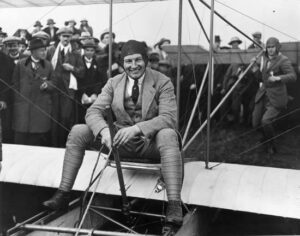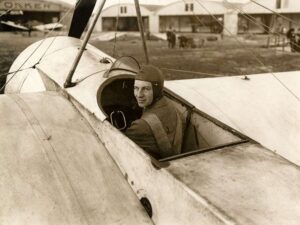In the annals of aviation history, Anthony Fokker was a luminary and a pioneering aviator whose contributions to aerial innovation are as legendary as they ae profound. Born on April 6, 1890, in Kediri, Java (then part of the Dutch East Indies, now Indonesia), Anthony Fokker’s fascination with flight ignited at an early age. His father, Herman Fokker, a Dutch coffee plantation owner, supported his son’s passion by providing him with the resources to pursue his dreams. Young Fokker’s early experiments with model aircraft laid the groundwork for his future endeavors in aviation.
Anthony Fokker, the Young Entrepreneur
Fokker’s interest in flight stemmed from Wilbur Wright’s exhibition flights in France in the summer and fall of 1908. At the age of 20, Fokker moved to Germany to pursue his ambition of becoming an aircraft manufacturer. In 1912, he established his first company, Fokker Aeroplanbau, laying the foundation for what would become one of the most influential aircraft manufacturing companies of the early 20th century.
The Eindecker Dominates the Skies
Fokker’s breakthrough came during World War I when he designed the Fokker Eindecker, a single-seat monoplane armed with a synchronized machine gun, allowing the pilot to fire through the propeller arc without striking the blades. This innovation, known as the interrupter gear, gave German pilots a significant advantage in aerial combat, leading to what became known as the “Fokker Scourge.” The Eindecker’s dominance in the skies underscored Fokker’s prowess as an aircraft designer and cemented his reputation as a visionary in aviation technology.
Throughout the war, Fokker continued to refine his designs, producing a series of successful aircraft for the German military, including the iconic Fokker D.VII, hailed by many as one of the finest fighters of the conflict. Fokker’s knack for creating agile, reliable aircraft earned him admiration and respect among pilots and military leaders alike.
Innovation in Aviation
Fokker is often credited with having invented the synchronization device which enabled World War I aircraft to fire through the spinning propeller. His role was certainly significant, but there were a number of prior developments before the result was achieved for which Fokker is commonly credited.
Fokker and his armament team, including Lübbe and Leimberger, also worked on lesser known projects, including a multi-barrelled machine gun, known as the Fokker-Leimberger. Although superficially similar to a Gatling gun, the action of the Fokker-Leimberger was substantially different. Problems with the gun, especially with ruptured cases, prevented its adoption into production during the war. After moving to the US, Fokker continued to work on the design, but he was ultimately unsuccessful—properly sealing the rotary split-breech was apparently very difficult. A single surviving prototype is known today at the Kentucky Military Treasures.
Anthony Fokker After The War
Following the war, Fokker returned to the Netherlands and established the Fokker Aircraft Corporation, where he continued to innovate and produce groundbreaking aircraft. His company became synonymous with quality and reliability, producing a range of commercial and military aircraft that enjoyed widespread success around the world.
One of Fokker’s most enduring legacies is his role in advancing aviation technology. His contributions to aircraft design, including innovations in materials, aerodynamics, and control systems, laid the groundwork for future generations of aircraft engineers and designers. Fokker’s pioneering spirit and relentless pursuit of excellence inspired countless individuals to reach for the skies and push the boundaries of what was thought possible.
Despite his untimely death in 1939 at the age of 49, Anthony Fokker’s legacy lives on, a testament to his vision, ingenuity, and passion for flight. His name remains synonymous with innovation and excellence in aviation, and his contributions continue to shape the course of aerial history to this day.
Wrapping It Up
As we reflect on the remarkable life and achievements of Anthony Fokker, let us remember the words of the legendary aviator himself: “The air is the only place free from prejudices.” Indeed, in the boundless expanse of the sky, there are no limits to what we can achieve, thanks in no small part to the pioneering spirit of visionaries like Anthony Fokker. Well that’s it for this week, until next time remember to Be Social, Fly Private!

